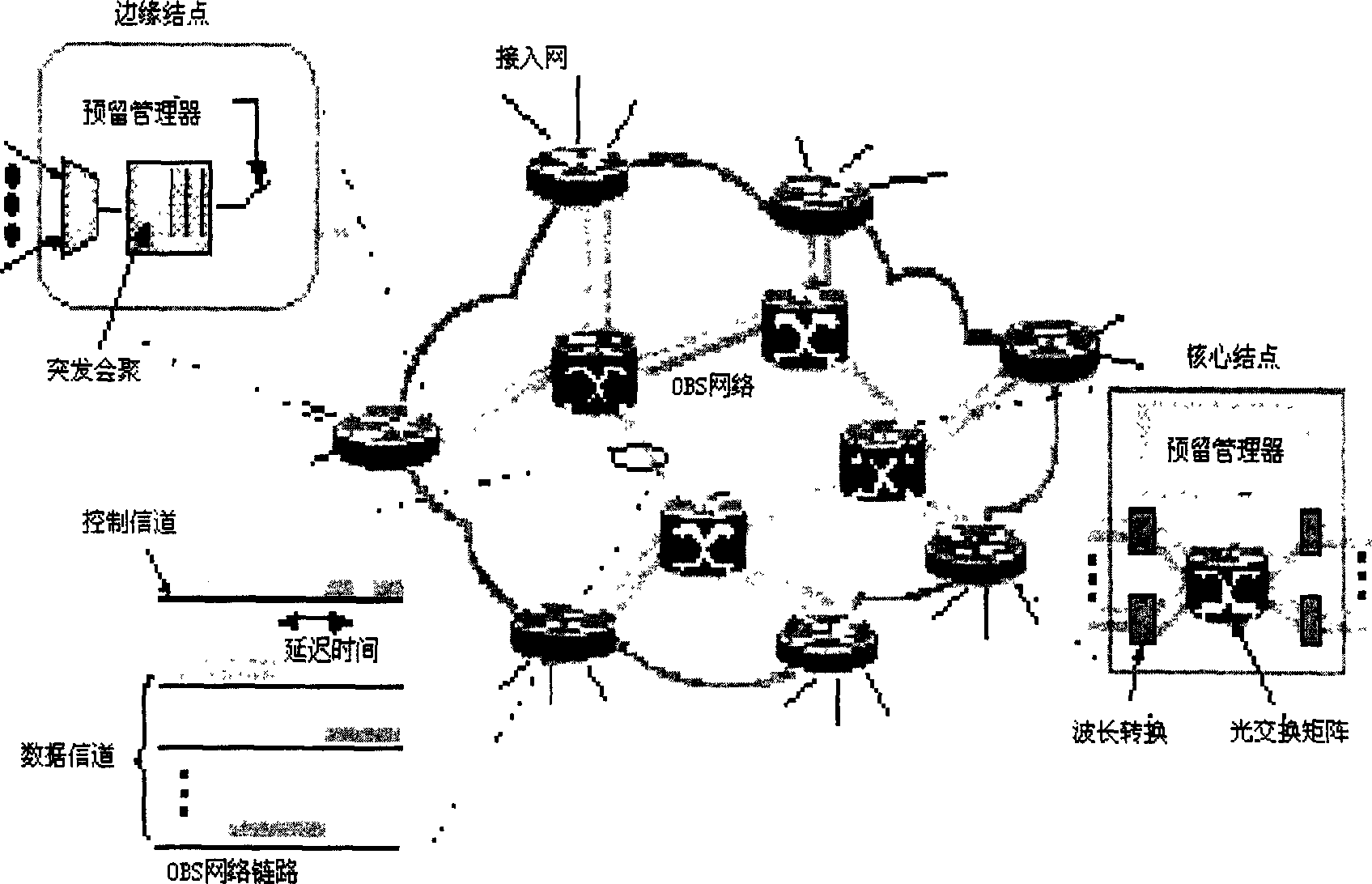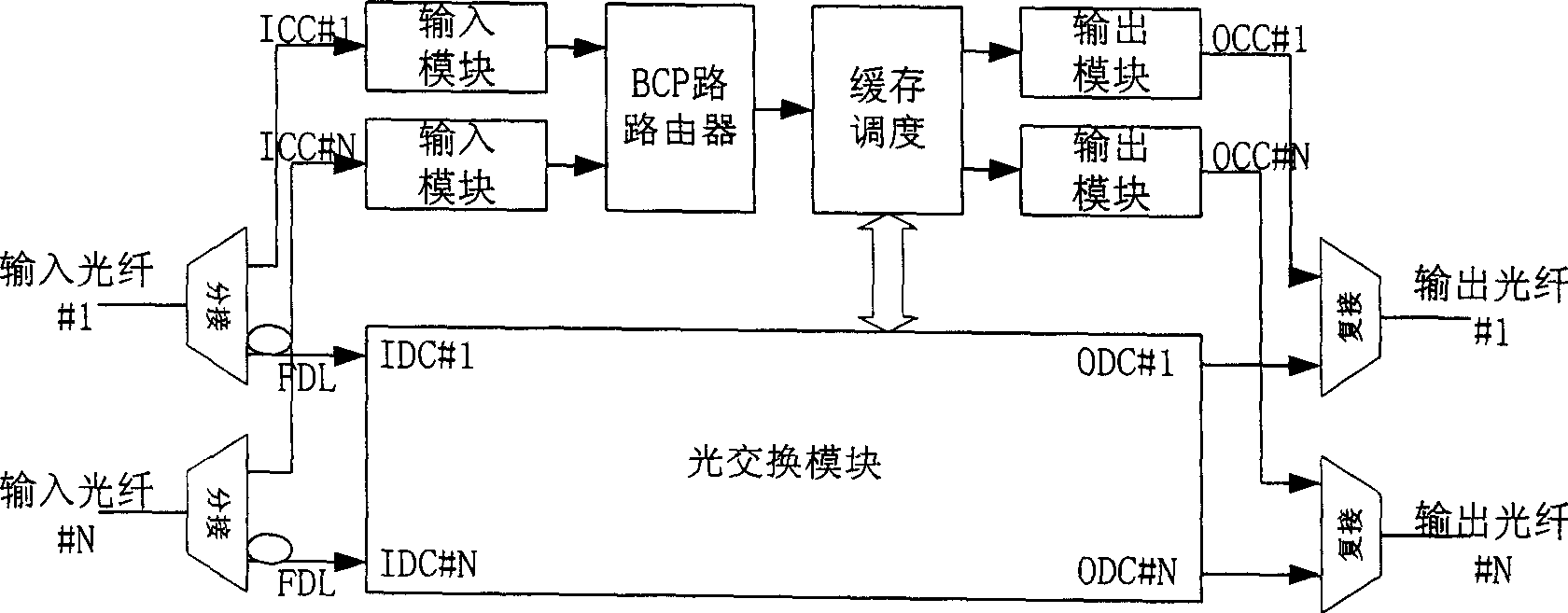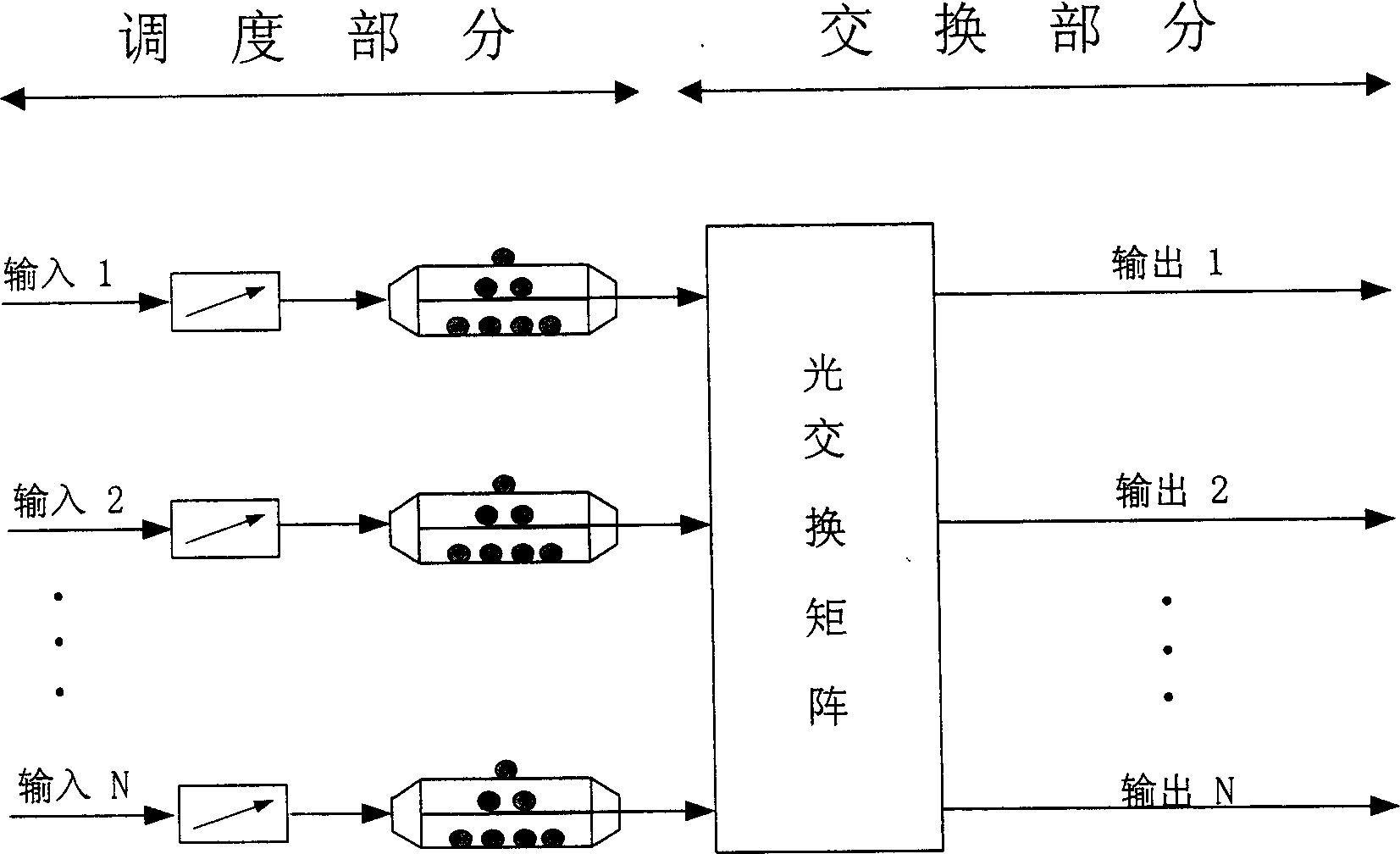Photoelectric mixed exchanging struture supporting light burst/group exchanging
A packet switching, optoelectronic hybrid technology, applied in electrical components, wavelength division multiplexing systems, electromagnetic wave transmission systems, etc., can solve the problems of optical power loss, high loss rate, complex series design and depth design, etc., and achieve good performance. , the effect of reducing the loss rate and reducing the delay
- Summary
- Abstract
- Description
- Claims
- Application Information
AI Technical Summary
Problems solved by technology
Method used
Image
Examples
Embodiment 1
[0064] Embodiment 1, 100% no packet loss embodiment after conflict
[0065] See attached Figure 8 , we use a 32×32 non-internal blocking optical switch matrix; the input end has two input ports with 8 wavelength channels each, and a total of 16 input wavelength channels are used as signal input; the output end also has two output ports with 8 wavelength channels each channel, a total of 16 output wavelength channels are used as the output of the signal. The difference from the input end is that the 16 wavelength converters can adjust the output signal to the required wavelength; the remaining 16 wavelength channels at the input end and the output end and 16 A photoelectric converter, 16 RAM caches, and 16 electro-optic converters are combined to form the electrical cache part to provide 16 electrical cache channels to resolve conflicts.
[0066] When the node starts to work, there is no data stored in the electrical cache, and all data is input from 16 input wavelength chann...
Embodiment 2
[0067] Embodiment 2. An embodiment in which there is a certain loss rate after the conflict
[0068] In practical applications, if a certain degree of data loss rate is allowed, then the attached Figure 9 The configuration can also achieve better cost performance. As shown in the figure, a 32×32 non-blocking optical switch matrix is still used; the input end has three input ports with 8 wavelength channels each, and a total of 24 input wavelength channels are used as signal input; the output end has three output ports with 8 wavelength channels each channels, a total of 24 output wavelength channels are used as signal output, and 24 wavelength converters can adjust the output signal to the required wavelength; the remaining 8 wavelength channels and 8 photoelectric converters at the input and output ends, 8 A RAM cache and 8 electrical-optical converters are combined to form the electrical cache part to provide 8 electrical cache channels to resolve conflicts. The additio...
PUM
 Login to View More
Login to View More Abstract
Description
Claims
Application Information
 Login to View More
Login to View More - R&D Engineer
- R&D Manager
- IP Professional
- Industry Leading Data Capabilities
- Powerful AI technology
- Patent DNA Extraction
Browse by: Latest US Patents, China's latest patents, Technical Efficacy Thesaurus, Application Domain, Technology Topic, Popular Technical Reports.
© 2024 PatSnap. All rights reserved.Legal|Privacy policy|Modern Slavery Act Transparency Statement|Sitemap|About US| Contact US: help@patsnap.com










